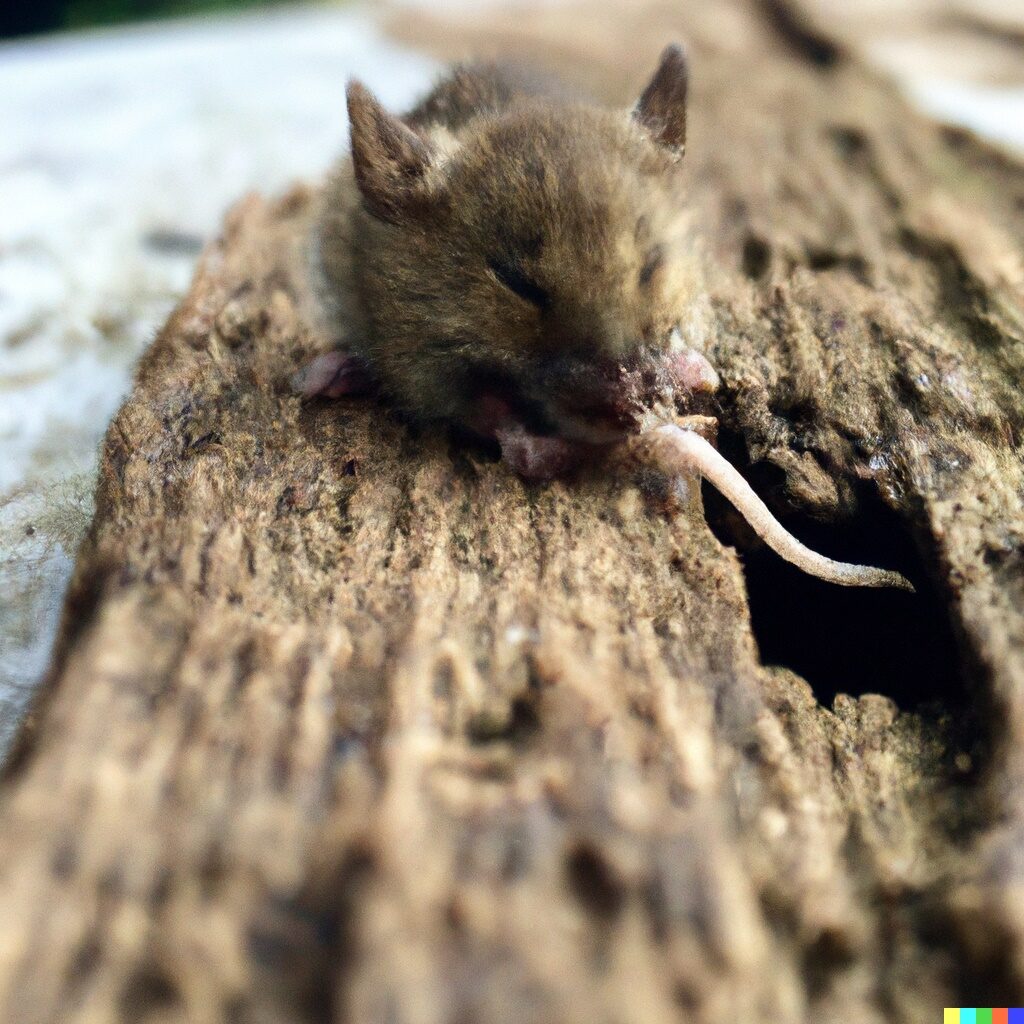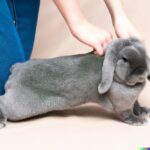Yes. mice do eat wood. Have you ever seen a mouse nibbling on wood and wondered if it was something they actually liked to eat? It’s easy to assume that mice have no dietary preferences, but the truth is more complex. In this article, we’ll uncover the surprising facts behind whether or not mice can eat wood. From what types of wood are edible to their nutritional benefits, get ready for an eye-opening journey into the lives of these curious creatures!
Types of Wood Mice Can Eat
Wood mice are a small species of rodent and, as such, have an omnivorous diet. They feed on various types of vegetation, including seeds, fruit, fungi, and buds from trees or shrubs. In addition to these natural sources of food, wood mice can also eat some non-plant-based foods such as eggshells and insects.
When it comes to the type of wood they consume, wood mice will typically go for hardwoods like oak or beech that provide them with essential nutrients. However, they may also nibble on coniferous woods like pine or cedar if necessary. The bark is usually avoided by wood mice due to its tough texture; however, in times when there is scarce food available, they will resort to eating the outer layers of tree bark too.
Read Also: Can mice eat grasshoppers?
In terms of other materials they eat aside from wood itself, grasses are particularly high up on their list since they contain plenty of protein and carbohydrates that keep them healthy and full! Insect larvae found within rotting logs are another favorite snack for these rodents, providing an abundance of minerals and vitamins that help support their metabolism! Additionally, wild fruits like blackberries are favored during the autumn season when all other options have become scarce, giving them much-needed energy boosts before hibernation time arrives!
Nutritional Value of Wooden Diet for Mice
The wooden diet for mice is a unique and fascinating approach to providing nutrition. It has been used by researchers to study the digestive capabilities of mice, as well as those of other animals, in controlled laboratory settings. Most of the mouse’s wooden diet is made up of wood shavings that have been soaked in water or another liquid nutrient solution. This process allows the nutrients from the wood shavings to be absorbed more easily into the mouse’s body than if they had just eaten them raw.
The primary benefit of a wooden diet for mice is its high nutritional value. A single serving of this type of food contains all the essential vitamins and minerals needed for healthy development, including calcium, phosphorus, magnesium, zinc, and iron. Additionally, it also provides an excellent source of dietary fiber, which can help keep digestion regular and reduce risk factors associated with chronic diseases such as obesity and diabetes. Lastly, because it comes from natural sources like tree bark or sawdust instead of processed ingredients like commercial pet food, there are no synthetic preservatives or additives that could harm your pet’s health over time.
-
- Nutritional Value
- High vitamin & mineral content
- Excellent source of dietary fiber
Natural Source
-
-
- No Synthetic Preservatives/Additives
- Low Risk Of Chronic Disease ,
- Obesity & Diabetes
-
Dangers Associated with Eating Wood
When humans consume wood, it can be incredibly damaging to their health. Eating wood is not a natural thing for us to do, and it can be very dangerous.
Wood contains cellulose, which the human body cannot digest properly, leading to an accumulation of fibers in the intestines that can cause blockages and lead to abdominal pain. Additionally, if ingested in large quantities, wood chips can become lodged in the throat or digestive tract, resulting in choking or other physical trauma from attempts at removal.
Eating wood may also contain harmful chemicals depending on its source, such as paint or varnish used on treated timber or insecticides used to treat infestations. Ingesting these things could have long-term effects on your health, especially if you keep doing it, like when you eat wooden objects over and over again. Furthermore, consuming pieces of sawdust has been linked with colonic perforation, which occurs when sawdust accumulates along the lining of the intestine and forms a plug that ultimately causes damage that leads to intestinal leakage.
In short, eating wood is dangerous and should never be attempted under any circumstances due to the potential adverse reactions caused by its indigestible properties as well as possible toxic contaminants found within it. It’s best for everyone’s safety and wellbeing if we just stick to our regular diets!
Reasons Why Mice Choose to Eat Wood
The reason why mice tend to eat wood is largely due to their diet. Mice are omnivores, which means they will eat both plants and animals if they can. Wood is an abundant source of nutrition that can provide them with essential carbohydrates, proteins, and fats for survival.
Mice also have a sharp set of incisors that allow them to easily chew through wood. They can gnaw on logs or branches in order to get at the nutritious inner layer, making it easier for them to access food sources than other small animals such as squirrels, who rely primarily on nuts or seeds. Additionally, because most woods contain cellulose, a complex carbohydrate that helps nourish the mouse’s digestive system, it becomes more appealing to these rodents than other food sources like fruits and vegetables, which may contain fewer nutrients overall.
Finally, wood makes an excellent nesting material for mice since they prefer dark places where they feel safe from potential predators; therefore, eating wood allows them to create homes within trees or shrubs while simultaneously providing nutrition during times of scarcity. With all these benefits combined, along with its abundance, it’s no wonder why mice choose this resourceful method of sustenance!
How to Deter Mice from Eating Wood
Mice are a common pest that can be very destructive if they’re not kept under control. In particular, they love to chew on wood and can cause quite a bit of damage in a short period of time. Fortunately, there are several methods you can use to keep mice away from your wood and prevent further damage.
The first step is keeping food items away from the wood. Mice won’t be attracted to the wood if there isn’t anything edible nearby; therefore, don’t leave any food scraps or crumbs near the area where you store your wooden objects or furniture. It’s also important to make sure all containers with food are sealed tightly so that mice cannot access them easily.
Another solution is using mouse repellents around areas with wooden items such as furniture pieces or shelves filled with books and other materials made out of wood. Repellents come in various forms like sprays, granules, plug-in devices, and ultrasonic sound emitters, which create an environment that is unpleasant for rodents but harmless for people and pets living in the home. Additionally, applying natural oils like peppermint oil to cotton balls and placing them around affected areas could help keep mice away due to their strong odors, which will repel them naturally without causing harm either way.
You may also want to consider setting up traps. Traps are a quick and easy way to catch mice while eliminating potential damage caused by these pests before they become serious problems. To do this effectively, consider using bait stations with slow-acting baits; this will give you more time before you need to reset traps after catching unwanted visitors because it will take some time before all rodents get eliminated completely.
FAQS
Why do mice bite wood?
Mice sometimes bite wood to sharpen their teeth, which helps them chew harder foods like seeds and nuts. It can also be a sign of anxiety or boredom. If your pet mouse has access to plenty of toys, treats, and places to explore, they’re less likely to show this behavior.
How quickly can mice chew through wood?
Mice are capable of chewing through wood quite quickly. They have sharp incisor teeth that allow them to gnaw through wood in a relatively short amount of time. In addition, mice can even chew through some types of plastic and soft metals like aluminum foil due to the strength in their jaws. It’s important to take action if you think there may be mice present in your home or business, as they can cause significant damage with their chewing capabilities.
Do mice destroy wood?
Yes, mice can damage wood. They can gnaw on wooden objects to create nesting sites and as a source of food if they are unable to find other sources. Mice may also chew through walls or even furniture in search of food or shelter. It is important to take precautions such as sealing off holes and crevices with steel wool and caulking materials, removing any potential food sources, using traps or poison baits when necessary, and keeping clutter away from the home so that mice don’t have places to hide.
What kind of mice eat wood?
Wood mice, also known as field mice or long-tailed field mice, are small rodents that feed mainly on seeds and plant material found in woodlands and fields. They will also occasionally eat insects, worms, and fungi. Wood mice are native to Europe but can be found in other parts of the world, such as North America.
Do mice eat wood in walls?
Mice are omnivores, so they can eat a variety of foods. Unfortunately, wood is one of them. If your walls have wood in them, it’s possible that mice may be eating it as part of their diet. To avoid this and protect your home, consider sealing any holes or crevices where mice might be entering, and keep food securely sealed away.
Do mice eat wood furniture?
No, mice do not eat wood furniture. They may chew on it if they find a way inside your home and need to create an entry or exit point, but eating wood is not part of their natural diet. Mice prefer more accessible sources of food, such as cereal grains, fruits, and vegetables.
How do you keep mice out of wood?
Mice are attracted to wood for its warmth and shelter, so the best way to keep them out is to make sure there are no entry points. Seal any openings in walls or floors with steel wool or caulk, and ensure that all windows and doors close securely. You can also use mouse traps baited with peanut butter and placed near likely access points. Additionally, removing food sources, like pet food, from areas where mice might find them can help deter unwanted rodents from entering your home.










